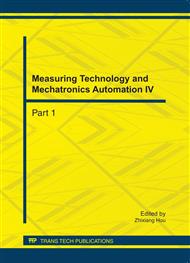p.918
p.923
p.928
p.933
p.938
p.942
p.946
p.950
p.956
Penetration Acceleration Signal Overload Rigid Separation Base on Local Mean Decomposition
Abstract:
Hard target penetration acceleration signals are non-stationary signals. In this paper use the local mean decomposition theory to analysis hard target penetration acceleration signals. Local mean decomposition can adaptively decompose any complex non-stationary signal into a number of physically meaningful instantaneous frequency components and these components could well reflect the intrinsic nature of the signals. Use local mean decomposition to separate the rigid projectile overload from hard target penetration acceleration signals. That provide reliable data to support accurately calculating the effective penetration depth, hard floors or holes through the number of target parameters on the penetration of weapons is significant. The author apply local mean decomposition algorithm in penetration acceleration signal separation and the results verify the effectiveness of the method.
Info:
Periodical:
Pages:
938-941
Citation:
Online since:
October 2011
Authors:
Keywords:
Price:
Сopyright:
© 2012 Trans Tech Publications Ltd. All Rights Reserved
Share:
Citation:


